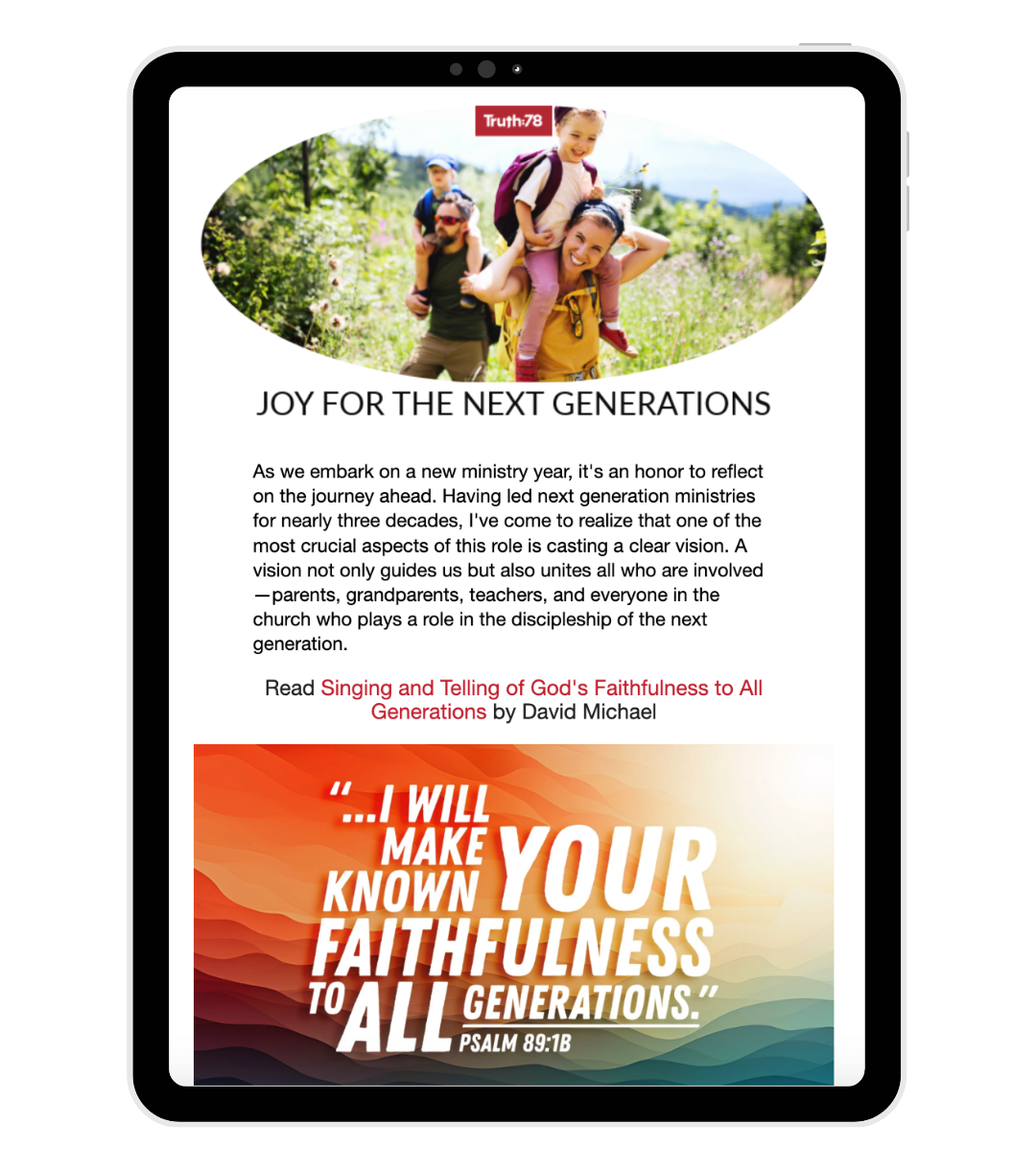Years ago I watched a movie that, in a sense, took my breath away. It had beautiful imagery and a storyline that gripped your heart and swept you into the characters’ thoughts, feelings, joys, and sorrows. However, this particular movie told a story that, when examined with a discerning eye, made sin appear beautiful and satisfying. Hence, great storytelling can be a powerful gift, but we must be aware of its potential dangers.
We must especially keep this in mind when evaluating Bible story resources for children.
A Powerful Gift
Great storytelling can bring the Bible alive, as it were, and encourage the mind and heart to be in awe of God as we see His ways and purposes unfold. It can promote love and trust in Jesus, and it can fuel a desire to walk in His ways. In short, great storytelling can be used to convey and explain essential doctrines of the Christian faith by communicating them in a compelling, exciting, memorable, and comprehensible manner for children.
Potential Dangers
“Great” storytelling can also communicate skewed, confused, or even false doctrine in a compelling manner. Beautiful imagery, fanciful language, and creative scenarios can captivate a child’s mind and heart. If these qualities take precedence over biblical truth, it can leave a lasting, faulty impression regarding God’s holy Word. And, depending on the extent that the storytelling deviates from the clear words of Scripture, this can be downright dangerous.
Fortunately, there are some wonderful Bible story resources available for children. But there are also many to be avoided. Here are seven questions to ask when evaluating story-based Bible resources:
- How much creative license does the author use in retelling the Bible story? In light of Scripture, could the events have actually happened this way? When pondering what might have happened, does the author use appropriate language such as, “Abraham might have been thinking…” or “Esther may have said something like…”?
- Does the way the story is told contradict clear biblical teaching in any way? Compare the story to the actual biblical text. Also, does the way the story is told serve as a strong foundation for a deeper understanding of God’s Word as your child matures?
- Does the story attempt to explain the text, or change the message of the text? Resources should aim at explaining what is actually in the text. Does the resource do this? Or does the storytelling use the text as a springboard to convey something different?
- Does the storytelling use child-friendly language that carefully keeps the integrity of the text? It can be very difficult to convey some truths in a child-friendly manner. Child-friendly should mean “simple explanation”—not something fanciful. Sometimes creativity must be sacrificed somewhat in order to honor the integrity of the text.
- Is the story told in a way that takes into account the whole counsel of God? For example, a Bible story may be used to emphasize the love of God. However, is His love conveyed in such a way that does not negate the totality of God’s nature—His holiness, justice, power, etc.?
- When included, are the essential truths of the Gospel clearly articulated and explained? How is sin defined? How is Jesus' death explained? Is the need for repentance and faith highlighted?
- On the whole, is the story truth-driven or “feelings” driven? The biblical narrative is meant to inform the mind so that the heart might be touched and transformed by the truth. The progression of learning flows from knowing truth to loving truth. As you read the story, what appears to be the driving force—an emotional appeal based on truth, or an emotional appeal based on creative storytelling?
So, parents, grandparents, and others who minister to children, let’s be careful and biblically discerning in choosing Bible story resources for children!
Also, you might be interested in the resources More Than a Story that takes children on a chronological journey through the Bible with a God-centered, gospel-focused, discipleship-oriented, theologically grounded perspective.







